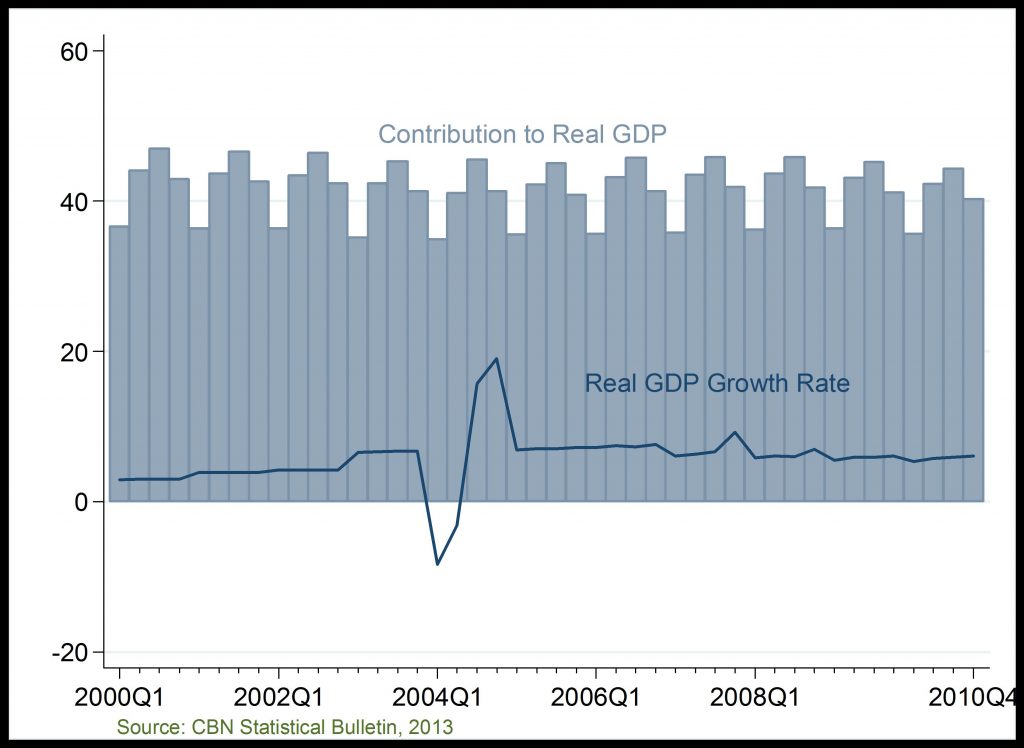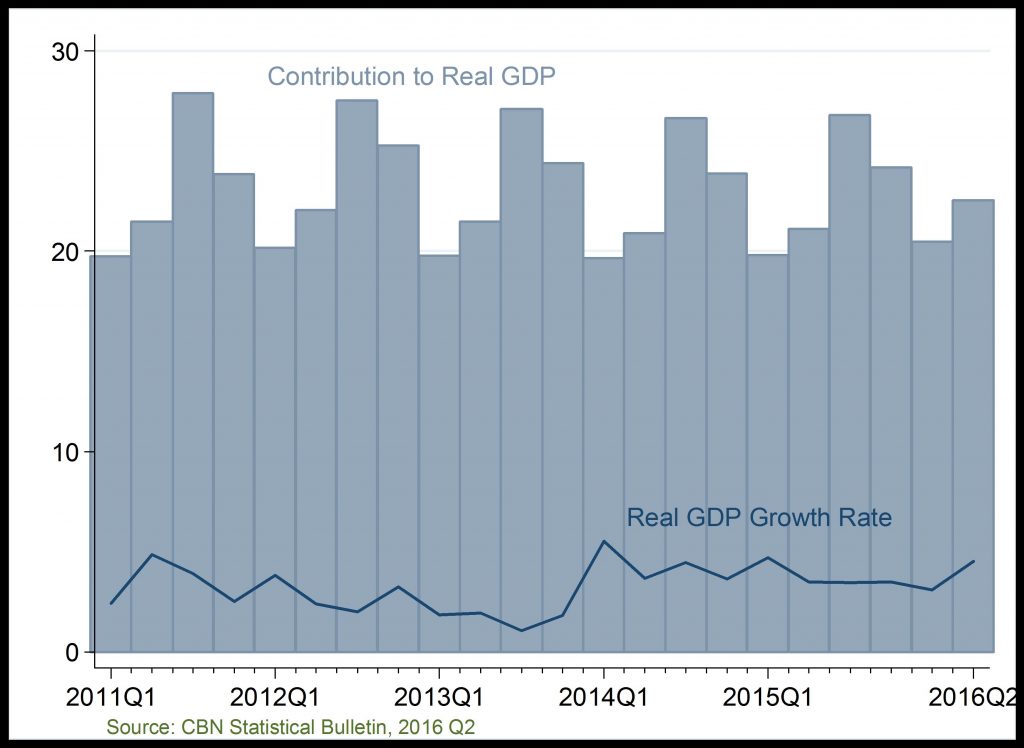Gross Domestic Product And Contribution To GDP
Real GDP at 1990 Base Year
GDP growth in agric. sector relatively flat post-2004

Real GDP at 2010 Base Year
GDP growth in the agric. sector picks up in 2016Q1

Gross Domestic Product: Agriculture Gross Domestic Product growth rate recorded its highest point in 2006Q1 but fell sharply subsequently. Particularly, the slow growth recorded in 2015 and 2016Q1 is attributable to security challenges in the North Eastern part of Nigeria and slowdown of economic activities in the country.
Contribution to GDP: The agricultural sector contributed about 40 percent to overall GDP until the rebasing of the GDP in 2012 bringing the contribution of the agricultural sector below 30 percent. While the agricultural sector remains the second contributor to GDP, its contribution to GDP fell in 2016Q1 is attributable to the seasonal nature of farming.
Related
Gross Federally Collected Revenue: Both oil and non-oil components of gross federal revenue fell below N40 billion in 2016, after recording a peak of N90 billion in 2013. The decline was most prominen
Public Debt-to-GDP Ratio: The ratio of Nigerias cumulative government debt to national GDP has maintained an upward trend indicating the countrys declining economic productivity and ability to repay
Public Debt Stock and Debt Servicing: Public debt stock has steadily increased overtime; reaching over N12, 000 billion naira by 2015Q4. With the persistent fall in crude oil price and the attendant d
Appropriation Act (Budget): Capital expenditure remarkably increased in 2016 relative to preceding year, on the account of the present governments renewed commitment to infrastructure development.


